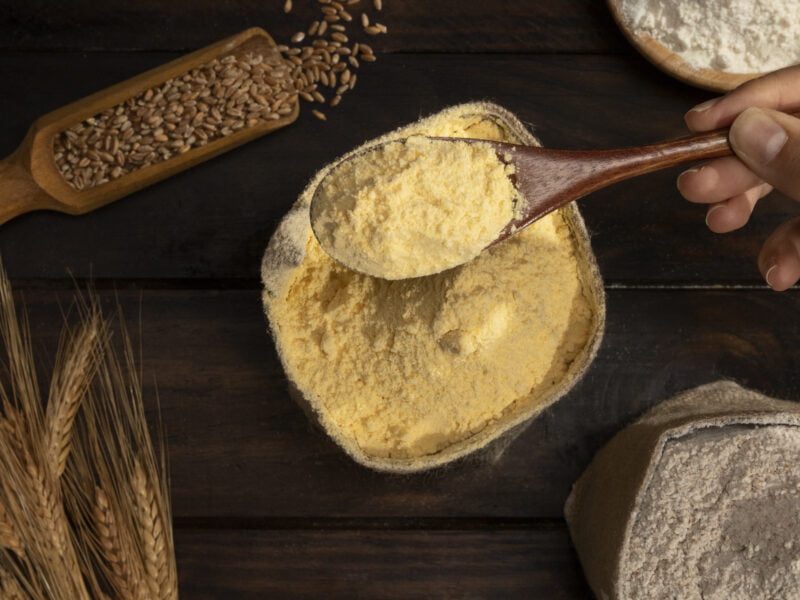We have all heard it at least once in our life. Breakfast is important, and the reason is quite simple. It is the first meal of the day so breakfast is responsible for the tone of your energy levels for the entire day.
And did you know that people who eat breakfast are more likely to maintain a healthy weight? According to a study skipping breakfast is associated with a higher risk of obesity.
Breakfast jump-starts your metabolism, helps you burn calories throughout the day, and gives you the energy to focus on work or school.
But just how many calories should you be consuming at breakfast? After interviewing several professionals, in this guide, we will disclose the right caloric intake for your morning meal along with certain expert tips to keep your weight management journey afloat.
How To Calculate Cloric Intake?
Calculating your daily caloric intake isn’t just a task for dieticians—it’s a useful skill that can help anyone tailor their diet to their personal health goals.
The amount of calories you need each day depends on various factors, including your age, gender, weight, height, BMR, and activity level.
Understanding Your Basal Metabolic Rate (BMR)
Your Basal Metabolic Rate (BMR) is the number of calories your body needs to maintain basic physiological functions at rest, like breathing and keeping your heart beating.
To calculate your BMR, you can use the Harris-Benedict equation or the Mifflin-St Jeor equation.
For example, the Mifflin-St Jeor equation is as follows:
- For men:
- BMR = 10 x weight (kg) + 6.25 x height (cm) – 5 x age (years) + 5
- For women:
- BMR = 10 x weight (kg) + 6.25 x height (cm) – 5 x age (years) – 161
Factoring in Your Activity Level
After calculating your BMR, you need to account for your activity level to determine your Total Daily Energy Expenditure (TDEE).
- Sedentary (little or no exercise): BMR x 1.2
- Lightly active (light exercise/sports 1-3 days/week): BMR x 1.375
- Moderately active (moderate exercise/sports 3-5 days/week): BMR x 1.55
- Very active (hard exercise/sports 6-7 days a week): BMR x 1.725
- Super active (very hard exercise/physical job or training twice a day): BMR x 1.9
For instance, if your BMR is 1500 calories and you are moderately active, your TDEE would be 1500 x 1.55, which equals 2325 calories per day.
Recommended Calorie Intake Per Meal
Now that you know your TDEE, how do you distribute those calories throughout the day? According to nutritional experts, a balanced approach is to allocate your daily caloric intake according to:
- Breakfast: 20-25% of total daily calories
- Lunch: 30-35% of total daily calories
- Dinner: 25-30% of total daily calories
- Snacks: 10-20% of total daily calories
For example, if your TDEE is 2000 calories, a balanced distribution would look something like this:
- Breakfast: 400-500 calories
- Lunch: 600-700 calories
- Dinner: 500-600 calories
- Snacks: 200-400 calories
Ensuring this range of caloric intake also helps in burning more calories when you lift weights and follow a scheduled routine.
How To Personalise The Calorie Intake?
Personalizing your caloric intake is crucial for meeting your specific dietary needs and health goals. Here’s how to do it effectively:
Dietary Preferences and Restrictions
First, consider your dietary preferences and restrictions. Whether you’re vegetarian, vegan, gluten-free, or have specific food allergies, your diet should accommodate these needs. For example, vegans may need to find alternative protein sources such as legumes, tofu, and nuts to meet their daily requirements.
Health Conditions
Next, take into account any health conditions you may have. If you have diabetes, you might need to monitor your carbohydrate intake more closely. Similarly, if you have heart disease, you should focus on consuming heart-healthy fats and avoiding trans fats, for which the 30 30 30 and the 90 30 50 diet plans are ideal.
Tools and Methods
There are various tools available to help you personalize your caloric intake. Apps like MyFitnessPal or Cronometer can track your calories and macronutrients, offering personalized recommendations based on your goals. Consulting with a registered dietitian can help with tailored advice to your specific needs.
How Many Calories Should You Take In Breakfast?
When it comes to breakfast, a general guideline is to consume about 20-25% of your total daily calories. This range can vary based on individual needs, but it provides a good starting point for most people.
Calorie Range:
- Adults: For an adult with a TDEE of 2000 calories, breakfast should be around 400-500 calories.
- Children: Children’s caloric needs vary, but a general recommendation is that breakfast should be about 20% of their daily intake, which can range from 300-400 calories for school-aged children.
- Athletes: Athletes or highly active individuals might need more calories for their activities, often ranging from 500-700 calories for breakfast.
Breakfast Ideas Within The Calorie Intake Range
According to the American Heart Association, eating a healthy breakfast is linked to improved cognition and reduced risk of heart disease. So, here are some practical and delicious breakfast ideas that fit within different calorie ranges. These ideas also work as a charming pre-workout meal.
Under 300 Calories
- Greek Yogurt with Berries and Honey:
A serving of Greek yogurt (100 calories) topped with a handful of berries (50 calories) and a drizzle of honey (50 calories) makes for a nutritious and low-calorie option.
- Spinach and Banana Smoothie:
Blend a cup of spinach (7 calories), a medium banana (105 calories), and a cup of unsweetened almond milk (30 calories) for a healthy, 142-calorie smoothie.
300-400 Calories
- Oatmeal with Nuts and Fresh Fruit:
A half-cup of rolled oats (150 calories) cooked in water, topped with a tablespoon of chopped nuts (50 calories) and a half-cup of fresh fruit (50 calories).
- Avocado Toast with a Poached Egg:
One slice of whole grain toast (70 calories) topped with half an avocado (120 calories) and a poached egg (70 calories).

400-500 Calories
- Whole Grain Toast with Peanut Butter and Banana:
Two slices of whole grain toast (140 calories) with two tablespoons of peanut butter (190 calories) and a medium banana (105 calories).
- Scrambled Eggs with Vegetables and Whole Grain Toast:
Two scrambled eggs (140 calories) cooked with a cup of mixed vegetables (50 calories) and served with a slice of whole grain toast (70 calories).
Make these foods a part of your breakfast for healthier and quicker weight loss. If you need more ideas on how to lose weight, you can also take inspiration from Kelly O’Donnell and Doja Cat’s fitness routines.
Foods To Avoid For Breakfast To Manage Calorie Intake
To keep your calorie intake in check while building muscle and losing weight, it’s important to avoid certain high-calorie foods that can derail your diet.
High-Calorie Foods to Avoid
- Sugary Cereals: Many cereals contain added sugars that can significantly increase your calorie intake. Opt for whole grain cereals with no added sugars instead.
- Pastries and Doughnuts: These are often loaded with sugar and unhealthy fats, making them a poor choice for a balanced breakfast.
- High-Sugar Granola Bars: While convenient, many granola bars contain as much sugar as a candy bar. Choose bars with high fiber and protein content instead.
Healthier Alternatives
Instead of reaching for these high-calorie options, consider healthier alternatives like:
- Whole Grains: Choose whole-grain bread, oats, and cereals.
- Fresh Fruits: Incorporate a variety of fresh fruits for natural sweetness and nutrients.
- Protein-Rich Foods: Include eggs, Greek yogurt, or lean meats to keep you full longer.
Wrapping Up
Breakfast isn’t just about eating something—it’s about eating the right things. So, whether you’re looking to lose weight, maintain your health, or simply enjoy your morning meal, these expert tips and guidelines will help you prepare the perfect breakfast.





